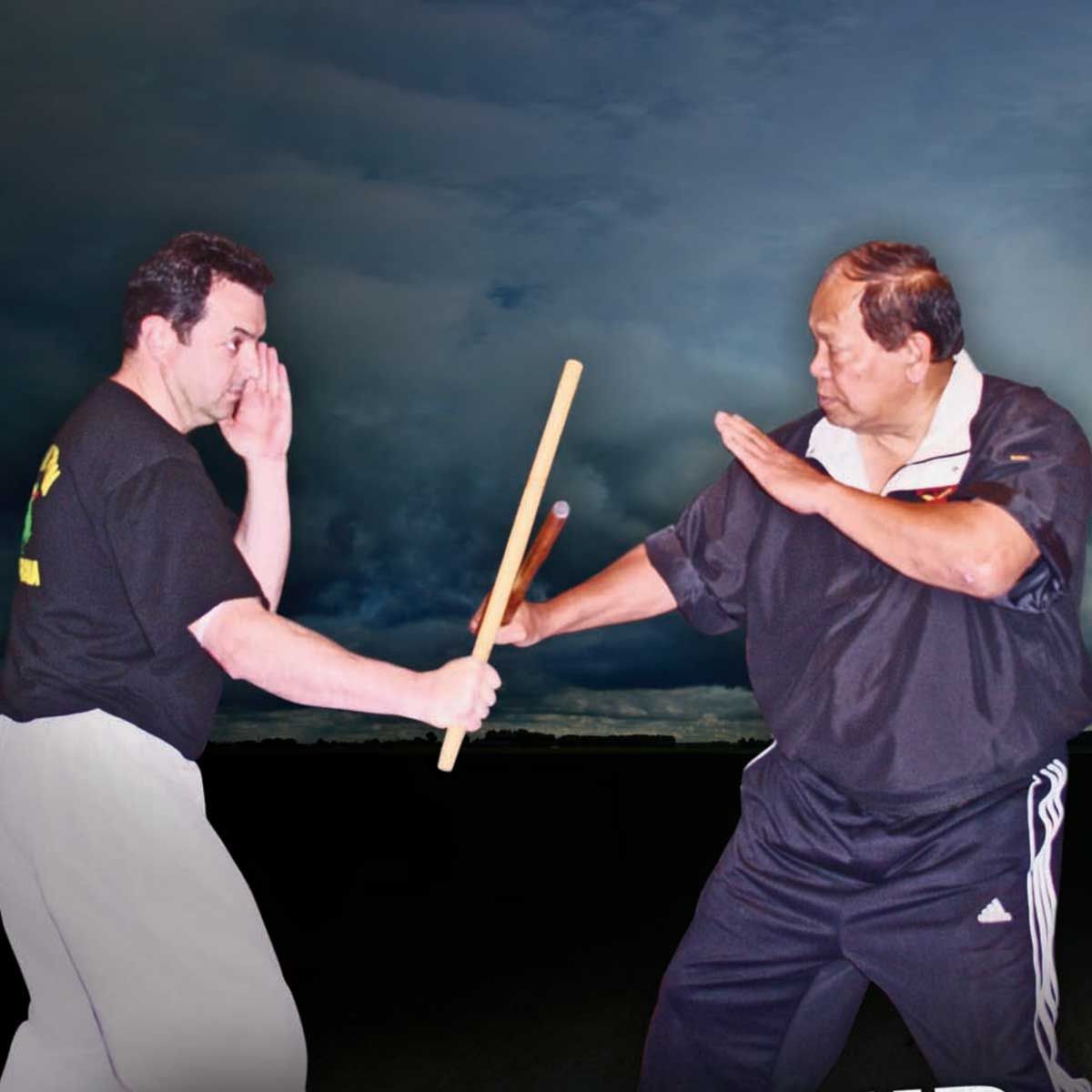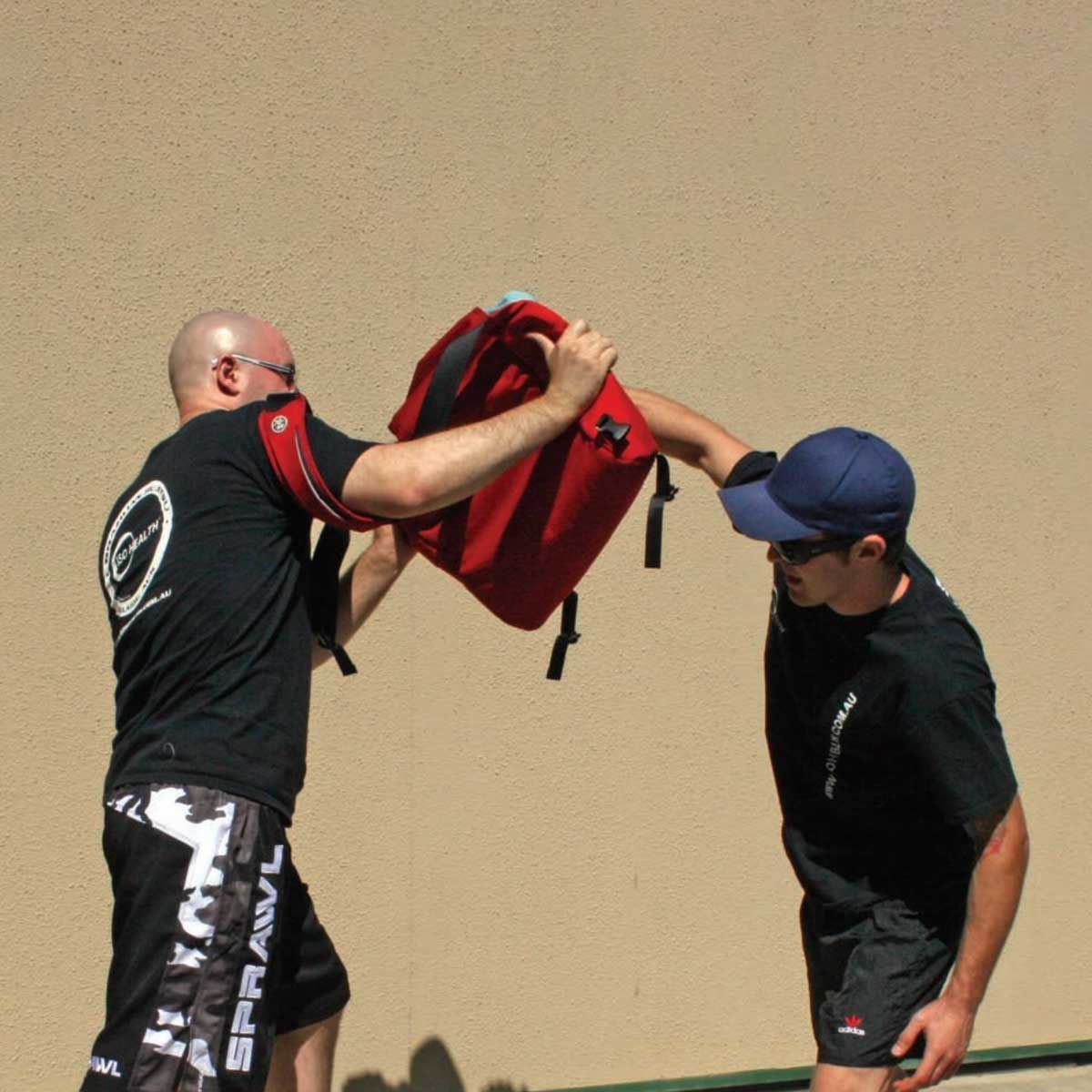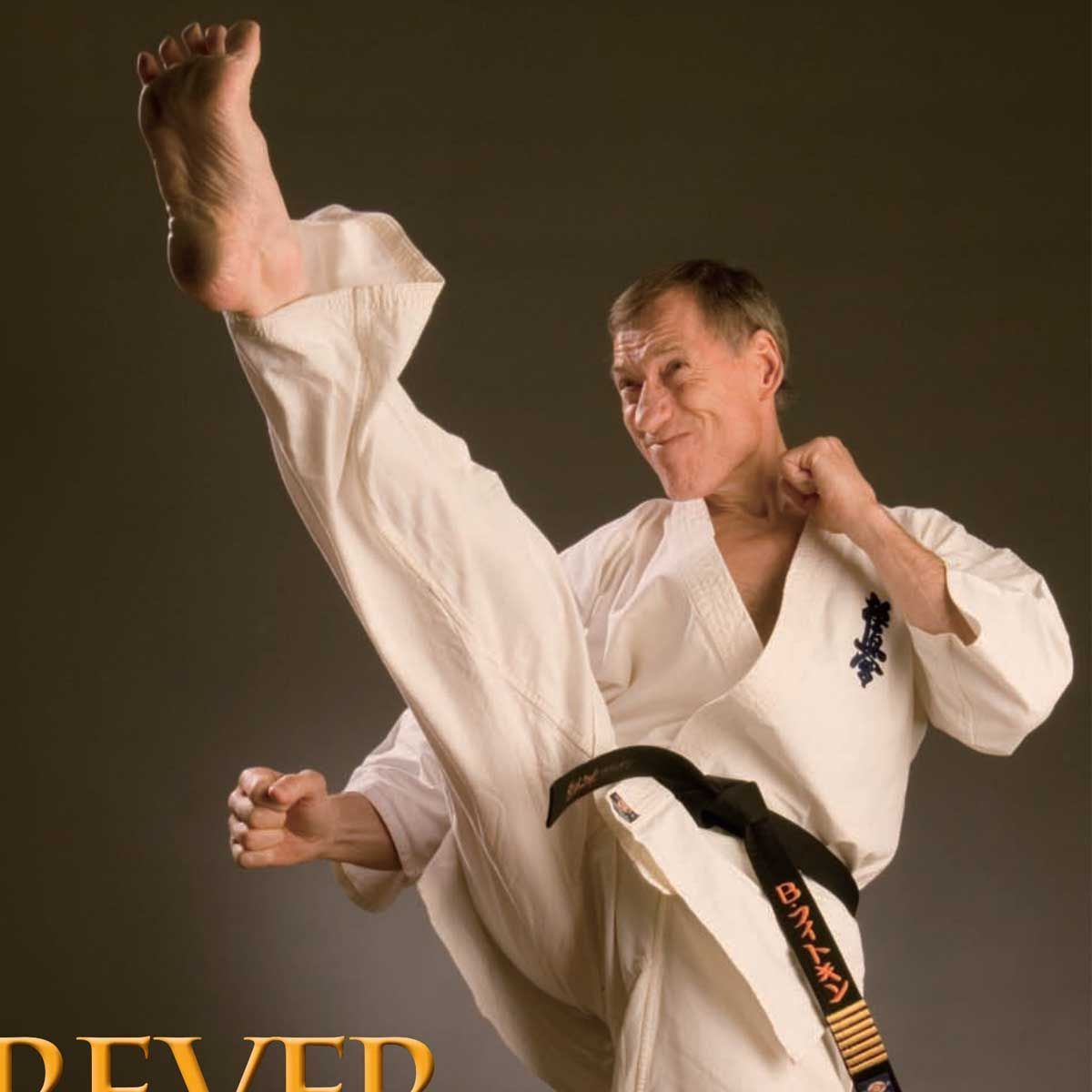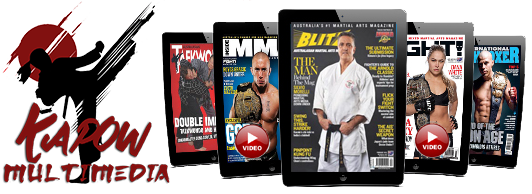BUSTED: ONE-INCH PUNCHING - Luke Gregory
Mastering the one-inch-punch: it’s all in the hips! The one-inch-punch generates a lot of interest among martial artists — and a fair bit of hot air. To some it is a skill attainable only by experts, and to others it is a basic necessity for earning an orange-belt.
Certainly there are variations on the technique that only advanced martial artists can master, but the basic, linear one-inch-punch is a fairly simple technique quickly mastered by anyone with reasonable levels of body awareness. Xiao Wu-style taijiquan (tai chi) instructor Luke Gregory explains how it’s done.
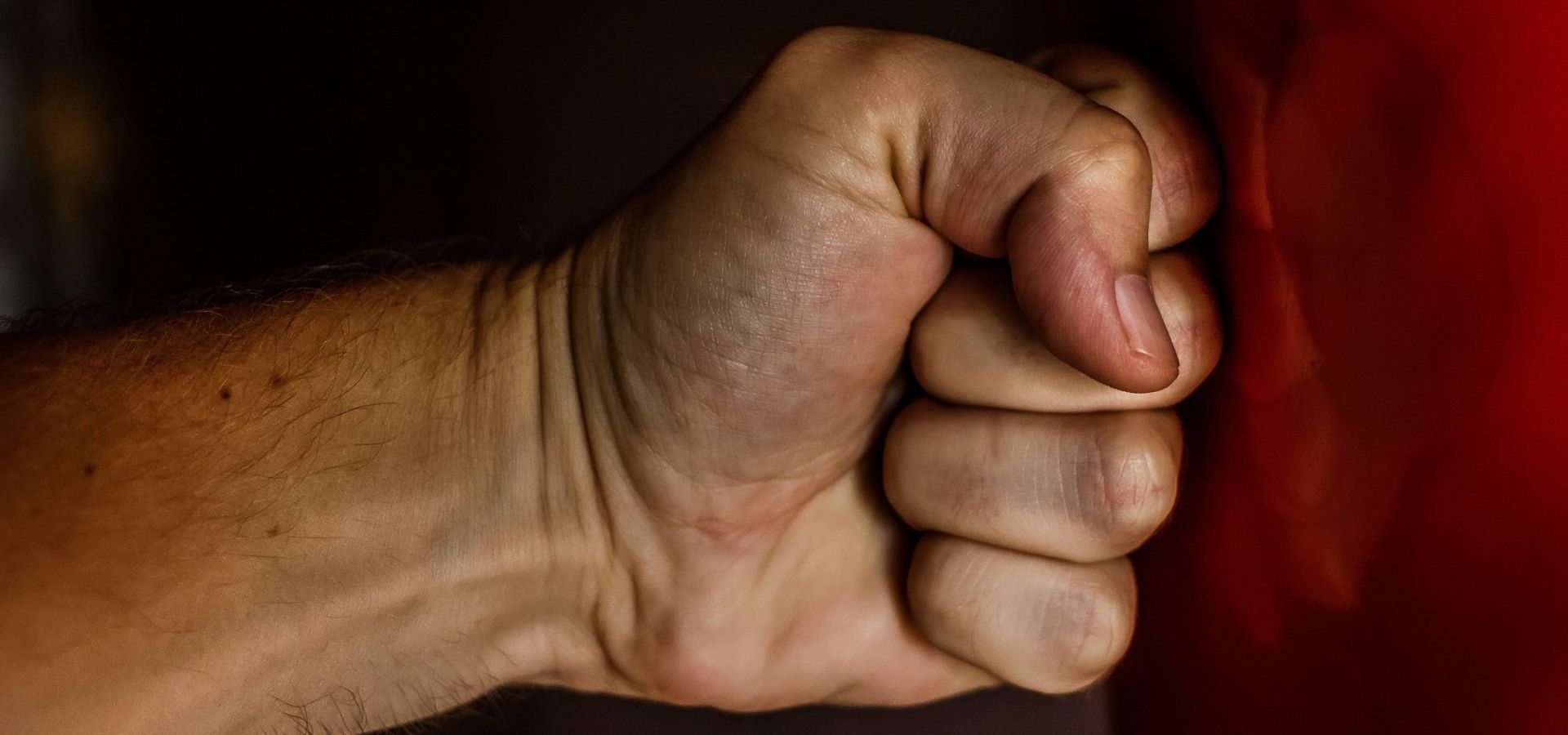
This article aims to explain the basic mechanics and conceptualisation used by our school of movement to launch super-short power strikes. There are a few different versions of the one-inch punch, but I will discuss the simplest method, which is the easiest to use under combat pressure. The essence of power striking is the summation of forces. This means the whole body performs compound movements to generate power that is focused at the striking point.
To realise this concept, it’s helpful to break down the compound movement into smaller ones that are easier to understand and practise, removed from the gross movement.
For example, we can deconstruct a strike into three elements:
• Platform: The structure from which the strike is launched and its inherent stability and capacity for momentum generation
• Transit: Moving the weapon to the target zone
• Delivery: Moving the weapon through the target zone at the moment of impact.
As I was taught it, the one inch punch is a fundamental technique/concept that enables us to improve the delivery phase of our punch, whatever the combat range, in whatever direction. A lot of fighters need to work on their delivery phase. When they punch a heavy bag, it doesn’t move. This means their punches lack power. Have a look for yourself the next time you see other people working the big bag. When they punch a 70kg-plus heavy bag with a sharp, snappy straight punch, does the bag hit the wall behind the bracket?
When you have the technique correct, you should cause the bag to hit the wall each time you launch a straight punch. The road to really heavy punching is to perfect the one-inch punch. Let us now examine the details within the platform, transit and delivery phases, which combine to generate the hardest punch.
THE PLATFORM
Platform refers to the posture from which your punch is launched. It is from platform that the majority of power behind the punch is generated. Whatever the position of the feet, with bent knees it should be possible to twist the hips behind all punches. This produces the hardest punch because maximum body weight is incorporated into the force behind the punch. This type of punching is also referred to as ‘punching from the legs’ or ‘leg punching’, during which the shoulders and waist maintain position relative to each other, so that all upper-body movement is driven by a primary hip movement. I have seen many, many fighters throwing punches from the waist, but not so many throwing from the hips.
Think about it: often when a punch is thrown you can see the shoulders and chest move behind the punch, but the hips remain static. Obviously a punch from the waist is powerful because all the deep abdominal muscles and chest muscles help to generate force. However, this type of punching does not fully incorporate the buttocks and quadriceps. Punching from the legs does. The three largest muscle groups in the body are the buttocks, quadriceps and latissimus dorsi (lats). Depending on the trajectory of the punch, punching from the legs incorporates these major muscle groups as prime movers in a synergistic movement.
In its most basic form, launching a one-inch punch incorporates the glutes and the quads. (Note: whatever method is used, it is essential to also have superstrong core muscles.) Physics decrees that force equals mass multiplied by velocity (speed) — F = MV. The greater the body mass behind the movement, the more power is generated. Therefore, swinging the hips and legs into a punch adds a heap of extra mass. Also, the greater the acceleration, the more power is generated. Most fighters use distance to ensure adequate acceleration during the transit phase.
However, (depending on the fighter’s fast-twitch/slow twitch muscle fibre ratios) using summation of forces it should be possible to reach the same high speed without the need to wind up first, through the use of all the available muscles (incorporating the majority of the biggest muscle groups) in a short, simultaneous spurt. So, if you can use more muscles at the same time you will generate more speed and add more mass — the result being greater force.
The most important aspect within the concept of ‘platform’ is the ‘axis of movement’. Using this model, the shoulders and hips can be regarded as a class two lever system when viewed from above. In our system and others such as Chen-style taiji, Hsing-I, bagua, etc., weight is never evenly distributed between the legs. One leg is ‘full’ and the other leg is less so (referred to as ‘empty’); the full leg is the leg bearing most of the weight. Therefore, a pivot point always exists over the full leg. If we imagine a vertical axle running from the sky to the floor, the axle would run from the inside of your scapula (shoulder blade) down to just behind your greater trochanter (where your buttock muscles attach to the top of your femur or thigh bone), then down through your heel.
Whenever weight is transferred between the legs, this axis of movement also follows across between the hips. Therefore, when weight is on the left leg, then the pivot point is at the left. When weight transfers to the right leg, the pivot point transfers to the right side also. Therefore, if we think of a short jab launching from a rightfoot bow stance (above), the pivot point is over the right leg.
This means there is a short lever between the axis of movement and the right shoulder/hip, and a long lever between the axis of movement and the left shoulder/hip. As we know, the load at the long end of a classtwo lever results in great force at the short end. To move this load, we can generate rotation at the left shoulder by kicking out (abducting) the left knee. This causes the long end of the lever to rotate anti-clockwise, thus creating great anti-clockwise force at the short end. This short end rotation is then transferred into linear force as the right arm extends in a straight line towards the target.
Throughout this process, the entire platform can also move sideways towards the target to add more force to the punch. Bruce Lee heavily utilised this sideways movement when launching one-inch-punches. The difference between his method and this method is that he would lift his back heel off the floor and slightly elevate his body on the front leg at impact, whereas we are maintaining exactly the same height or dropping the weight. Also, we keep the rear heel on the floor to ensure maximum activation of the glutes throughout the punch. As such, Bruce Lee’s one-inch-punch (that I’ve seen) was slightly more driven by momentum, whereas this method relies entirely on fast twitch muscle contraction.
TRANSIT
Transit is the act of conveying the striking weapon (in this case, a fist) to the target zone. During the one-inch punch the transit phase is not enormously relevant in any other sense than it is the act of getting the fist close to the opponent before the one-inch punch is launched, but it is still an essential phase to consider in all punches. At all times in the transit phase, you are relaxed. This generates speed of transit. At impact, this speed can be incorporated into the F=MV equation if required, but it’s not always a necessity. In itself, the one-inch punch represents only the delivery phase — the penetrating ‘snap’ at the end of a punch.
This is why the one-inch punch is such an important tool to possess: because you can launch it at any time, regardless of how the weapon approaches the target zone. In short, once a fi ghter has mastered the one-inch punch, under most circumstances they can launch powerful punches in any direction.
DELIVERY
Delivery is the act of making contact with the target and striking through it. We have already established that most of the one-inch punch’s power is generated by the platform. However, a great deal of extra power can be generated by the striking fist. One method is to further tense the fingers’ flexor muscles (thus tightening the fist) at the point of impact. My Chinese instructor, Zhang Xiao Wu, takes great delight (as do I these days) in knocking people over using only the inherent force found in the forearm via the act of making a fist from an open hand. Try it for yourself: hold your relaxed open hand in front of your target, then just make a fist as you let your hand fall forward into the target.
The act of making a fist creates forward force. You will find that more power is generated if the thumb is bent at 90 degrees at the knuckle, with the tip of the thumb touching the second metacarpal (the bottom section of bone) of the middle finger. At the moment this fist is formed, you can add extra acceleration by opening out the first and second knuckles of the index finger and little finger (photo three, page 54). While in the transit phase you are totally relaxed, but the delivery phase is where the core and all the prime movers and agonist muscles in the movement tense to facilitate the punch and push it through the target.
This is a very fast-twitch, compound event. It has been my experience that athletes with strong cores who are flexible can pick up this technique within an hour or so. Those with less flexibility sometimes find it harder to relax into the explosion. In this case, the trick is to only think about the feet and the legs until the fist touches the target, then simulate a sneeze-like explosion at the abdomen while thinking about the knuckles of the striking fist passing through the bag. There are many specific conditioning exercises to train the kind of power needed for this type of punch, but it is also essential not to underestimate the neural component of punching.
One very simple exercise beginners can use to improve their one-inch punch is to assume the delivery posture of the punch. Then, relatedly push the body further over the full (weight-bearing) leg while maintaining a solid core and keeping the fist in posture. This causes the bag to move away from the body and activates all the muscles used during the delivery phase of the one-inch punch. Repeat this exercise a couple of thousand times over a couple of weeks and you will train all the requisite neural pathways to facilitate the delivery phase. Then, try it fast and you should find the punch has power.
Once this basic punch has been mastered with a two footed platform, you can begin playing with the same concepts in every direction. Later you can practise on one foot, but this will require the use of other force-multipliers, which is a topic for another article.
About the author: Sifu Luke Gregory has trained extensively in China and has won gold medals at the country’s premier tai chi competition. Based in Brisbane and Gold Coast, Queensland, he teaches Xiao Wu taiji and qigong conditioning techniques, as well as instructing Certificate III and IV Fitness courses through Fitnance Australia. He can be contacted via email at luke@ fitnance.com.au. Check out footage of Gregory demonstrating various styles of the punch at www.blitzmag.net.
Blitz Martial Arts Magazine, FEBRUARY 2010 VOL. 24 ISSUE 02







